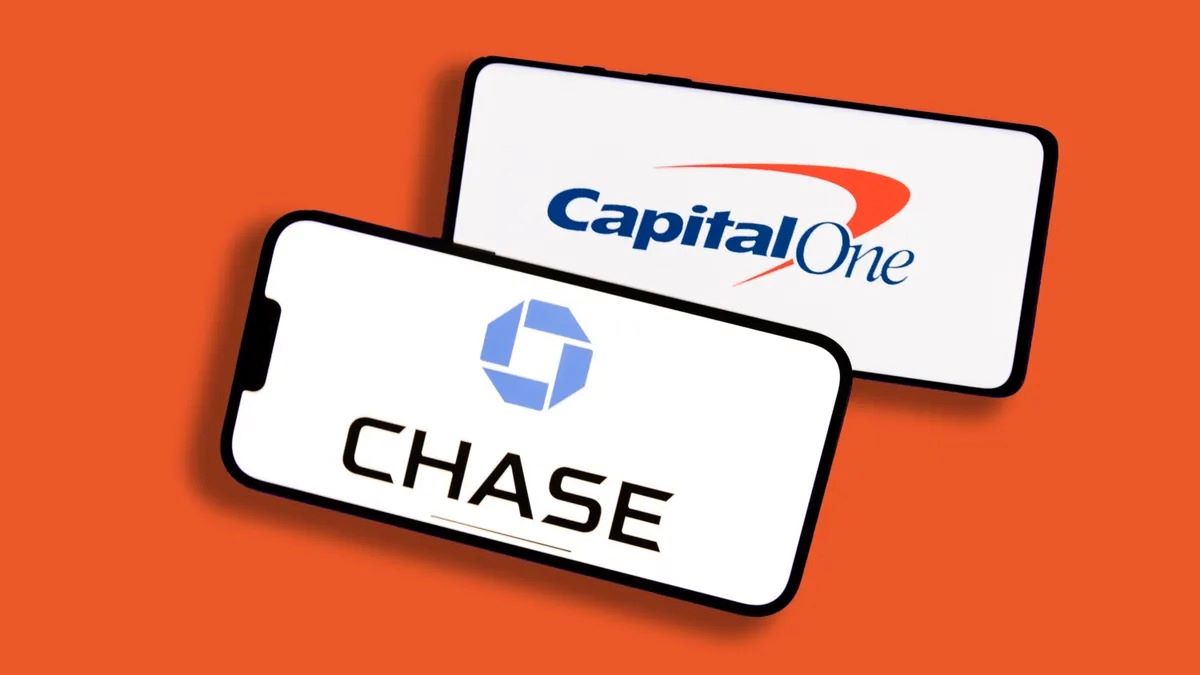Home>Finance>Why Does It Say My Perkins Minimum Payment Differs From The Payment Schedule


Finance
Why Does It Say My Perkins Minimum Payment Differs From The Payment Schedule
Modified: March 1, 2024
Learn why your Perkins minimum payment differs from the payment schedule. Get clarity on your finances and manage your payments effectively. Unlock the answers you need.
(Many of the links in this article redirect to a specific reviewed product. Your purchase of these products through affiliate links helps to generate commission for LiveWell, at no extra cost. Learn more)
Table of Contents
Introduction
Understanding Perkins Loans
Perkins Loans are a type of federal student loan that offers low-interest rates and favorable repayment terms to help students finance their education. These loans are awarded based on financial need, and the amount a student can borrow is determined by the school’s financial aid office. The funds for Perkins Loans are provided by the federal government to participating schools, and the schools act as the lender, making the loan directly to the student.
Unlike other federal student loans, Perkins Loans are administered by the school, and the school is the entity to which the borrower makes payments. The school uses a third-party servicer for billing and other administrative tasks related to the loan. This unique structure can sometimes lead to confusion for borrowers, especially when it comes to understanding the minimum payment requirements and discrepancies in the payment schedule.
It’s essential for Perkins Loan borrowers to have a clear understanding of how their minimum payment is calculated and what factors can lead to discrepancies in the payment schedule. By gaining insight into these aspects, borrowers can effectively manage their loan repayment and address any issues that may arise.
Understanding Perkins Loans
Perkins Loans are a federal student loan program that provides financial assistance to undergraduate and graduate students with exceptional financial need. These loans feature a fixed interest rate of 5% and offer favorable terms, such as a nine-month grace period after graduation before repayment begins. Additionally, Perkins Loans come with a variety of benefits, including loan cancellation for certain types of employment or service, as well as deferment and forbearance options.
One distinctive aspect of Perkins Loans is that the school acts as the lender, using a limited pool of federal funds to provide loans to eligible students. As a result, not all schools participate in the Perkins Loan program, and the availability of funds may vary from one institution to another. The school, in turn, uses a loan servicer to manage the billing and collection of payments from borrowers.
Perkins Loans are awarded based on financial need, and the amount a student can borrow is determined by the school’s financial aid office. Undergraduate students can borrow up to $5,500 per year, while graduate students may borrow up to $8,000 per year. The total aggregate limit for undergraduate studies is $27,500, with an additional $60,000 for graduate or professional study, including the amount borrowed as an undergraduate.
It’s important for borrowers to be aware of the unique characteristics of Perkins Loans, including the role of the school as the lender and the specific benefits and terms associated with these loans. Understanding these aspects can help borrowers make informed decisions regarding their education financing and loan repayment strategies.
Minimum Payment Calculation
When it comes to Perkins Loans, the minimum payment amount is a crucial aspect of the repayment process. The calculation of the minimum payment is based on a standardized formula that takes into account the outstanding loan balance, the repayment period, and the fixed interest rate of 5%. The minimum payment for Perkins Loans is typically determined to ensure that the loan will be paid off within a specific timeframe, commonly ten years.
The minimum payment amount is calculated to cover both the principal balance and the accruing interest over the repayment period. This ensures that borrowers make steady progress in reducing the outstanding balance while also meeting their interest obligations. The structured approach to minimum payment calculation reflects the goal of facilitating a manageable yet effective repayment process for borrowers.
It’s worth noting that the minimum payment for Perkins Loans may be subject to adjustment under certain circumstances. For example, borrowers who experience financial hardship or qualify for loan deferment or forbearance may be eligible for modified repayment terms, including reduced or postponed payments. Additionally, borrowers who pursue eligible careers in public service or specific fields may qualify for loan cancellation, further affecting the minimum payment calculation.
Understanding how the minimum payment is calculated is essential for borrowers to plan their finances effectively and stay on track with their loan repayment. By grasping the factors involved in this calculation, borrowers can make informed decisions about their financial commitments and explore options for managing their Perkins Loans responsibly.
Factors Affecting Minimum Payment
Several factors can influence the minimum payment amount for Perkins Loans, impacting borrowers’ repayment obligations and the overall management of their loan accounts. Understanding these factors is crucial for borrowers to navigate the repayment process effectively and make informed financial decisions.
- Outstanding Loan Balance: The amount of the outstanding loan balance directly affects the minimum payment. As the balance decreases over time through regular payments, the minimum payment amount also adjusts accordingly.
- Repayment Period: The length of the repayment period, typically set at ten years for Perkins Loans, plays a significant role in determining the minimum payment. Shorter or longer repayment periods can lead to adjustments in the minimum payment amount.
- Interest Rate: The fixed interest rate of 5% for Perkins Loans has a direct impact on the minimum payment calculation. Changes in the interest rate, though rare for Perkins Loans, would result in adjustments to the minimum payment amount.
- Loan Deferment or Forbearance: Borrowers who qualify for loan deferment or forbearance due to financial hardship or other eligible circumstances may experience modifications to their minimum payment requirements during the deferment or forbearance period.
- Loan Cancellation Eligibility: Certain career paths, such as public service or specific fields, may offer opportunities for loan cancellation. Borrowers pursuing these paths should be aware of how their eligibility for loan cancellation may impact their minimum payment obligations.
By considering these factors, borrowers can gain insight into the dynamics of minimum payment calculation and the potential adjustments that may arise throughout the repayment period. This understanding empowers borrowers to proactively manage their Perkins Loans and make informed choices regarding their financial responsibilities.
Discrepancies in Payment Schedule
While Perkins Loan borrowers are provided with a repayment schedule outlining the timing and amounts of their payments, discrepancies in the payment schedule can occasionally arise, leading to confusion and concern. These discrepancies may manifest in several ways, impacting the expected payment amounts, due dates, or the overall structure of the repayment schedule.
One common source of discrepancies in the payment schedule is the potential misalignment between the information provided by the loan servicer and the borrower’s expectations. This misalignment can stem from administrative errors, updates to the loan account, or adjustments made to the repayment terms based on the borrower’s circumstances. Additionally, changes in the loan servicer responsible for managing the Perkins Loan can sometimes lead to discrepancies in the payment schedule if the transition is not seamlessly executed.
Furthermore, borrowers may encounter discrepancies in the payment schedule when navigating loan deferment, forbearance, or loan consolidation processes. These transitional phases can introduce complexities that impact the payment schedule, requiring clear communication and proactive management to ensure that the schedule accurately reflects the borrower’s current status and obligations.
It’s important for borrowers to address discrepancies in the payment schedule promptly and seek clarification from the loan servicer or the school’s financial aid office. By proactively engaging with the relevant parties and verifying the details of the payment schedule, borrowers can mitigate potential challenges and maintain clarity regarding their repayment obligations.
Resolving discrepancies in the payment schedule is essential for borrowers to uphold their commitment to timely and accurate loan repayment. By actively monitoring the payment schedule and seeking resolution for any discrepancies, borrowers can navigate the repayment process with confidence and ensure that their payments align with the expected terms and conditions of their Perkins Loans.
Resolving Discrepancies
When borrowers encounter discrepancies in the payment schedule or other aspects of their Perkins Loans, prompt action is essential to address and resolve these issues effectively. By taking proactive steps to clarify and rectify discrepancies, borrowers can uphold the integrity of their loan repayment and maintain a clear understanding of their financial obligations.
The following strategies can be employed to resolve discrepancies in the payment schedule and related loan details:
- Communication with Loan Servicer: Open and clear communication with the loan servicer is crucial for addressing discrepancies. Borrowers should reach out to the loan servicer to discuss any discrepancies in the payment schedule, seek clarification, and request necessary adjustments.
- Documentation Review: Reviewing loan documentation, including the promissory note and any correspondence regarding the loan, can provide valuable insights into the terms and conditions of the Perkins Loan. Comparing the documentation with the current payment schedule can help identify discrepancies and support efforts to resolve them.
- Engagement with Financial Aid Office: Contacting the school’s financial aid office can offer additional support in resolving discrepancies. The financial aid office can provide guidance, review the loan details, and facilitate communication with the loan servicer to address any issues effectively.
- Follow-Up and Confirmation: After initiating discussions to resolve discrepancies, borrowers should follow up with the loan servicer or the financial aid office to ensure that the necessary actions are taken to rectify the issues. Seeking written confirmation of any adjustments made to the payment schedule can provide added reassurance.
- Maintaining Records: Keeping detailed records of all communications, including emails, letters, and phone conversations, related to the discrepancies and their resolution is essential. These records serve as a valuable reference in case further inquiries or follow-ups are needed in the future.
By employing these proactive measures, borrowers can effectively address discrepancies in the payment schedule and navigate the resolution process with clarity and confidence. Timely and thorough resolution of discrepancies contributes to the smooth management of Perkins Loans and supports borrowers in fulfilling their repayment obligations accurately.
Conclusion
Understanding the intricacies of Perkins Loans and the factors influencing minimum payment calculation is essential for borrowers to navigate the repayment process with confidence and clarity. By comprehending the unique characteristics of Perkins Loans, including the role of the school as the lender and the specific benefits and terms associated with these loans, borrowers can make informed decisions regarding their education financing and loan repayment strategies.
Factors such as the outstanding loan balance, repayment period, fixed interest rate, loan deferment, forbearance, and eligibility for loan cancellation can significantly impact the minimum payment amount for Perkins Loans. By recognizing these factors, borrowers can gain insight into the dynamics of minimum payment calculation and the potential adjustments that may arise throughout the repayment period.
Discrepancies in the payment schedule can occasionally arise, leading to confusion and concern for borrowers. Promptly addressing and resolving these discrepancies through open communication with the loan servicer, review of documentation, engagement with the financial aid office, and meticulous record-keeping is crucial for maintaining the integrity of the loan repayment process.
Ultimately, a clear understanding of Perkins Loans, proactive management of minimum payment factors, and diligent efforts to resolve discrepancies contribute to a streamlined and informed approach to loan repayment. By staying engaged with the loan servicer and leveraging available resources, borrowers can navigate the complexities of Perkins Loans with confidence and ensure that their repayment obligations align with the expected terms and conditions.
Empowered with knowledge and proactive strategies, borrowers can effectively manage their Perkins Loans, address discrepancies, and uphold their commitment to responsible loan repayment, ultimately achieving financial stability and success in their academic and professional pursuits.














